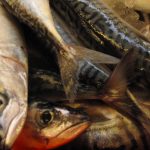Another piece of the Marine Life Protection Act has come into force which permanently restricts fishing in 20 percent of waters on the north central California coast.
The decision was praised by the environmentalists but fishermen lament. The decision followed the resignation on Friday of a member of the Fish and Game Commission due to a conflict of interest, and the rapid re-assignment of her swing-vote post by Governor Schwarzenegger on Tuesday.
It is told that the network of Marine Protected Areas (MPAs), including the Farallone Islands, Bodega Head and Point Reyes, will impact local fisheries, recreation areas and economies in an effort to protect biodiversity and ocean ecology. The five-member Fish and Game Commission chose from among four proposals.
Fishermen and others claim the MLPA is compromised by a conflict of interest because of private funding. But Susan Ashcraft, MPA project supervisor, said the claims are unjustified. Amy Tomah, spokesperson for the fund, told that the main goal of everyone involved with the act is to create an open and transparent process based on sound science, to allow the state to create a network that is as cohesive as possible.
Zeke Grader, executive director of the Pacific Coast Federation of Fisheries, calls the MLPA “conservation light,” or conservation for those who don’t want to do any heavy lifting. Local fishermen, who already face a tangle of state and federal regulations, question the necessity of MPAs in thriving coastal waters.
The MLPA carries three levels of protection, each with different implications for local fisheries. Commercial fishing in California has decreased significantly in the past 25 years. The number of commercial fishing licenses sold in the state from 1980 to 2004 has declined by 69 percent to about 6,000 today.








